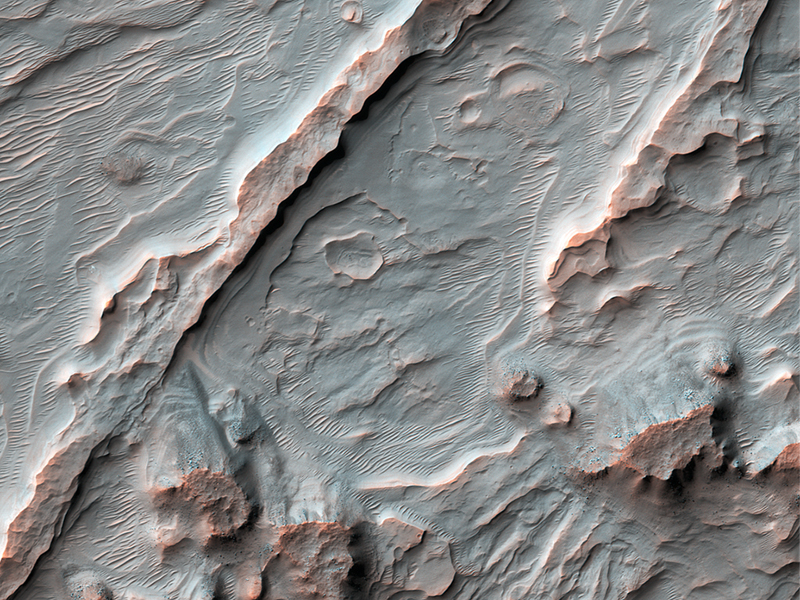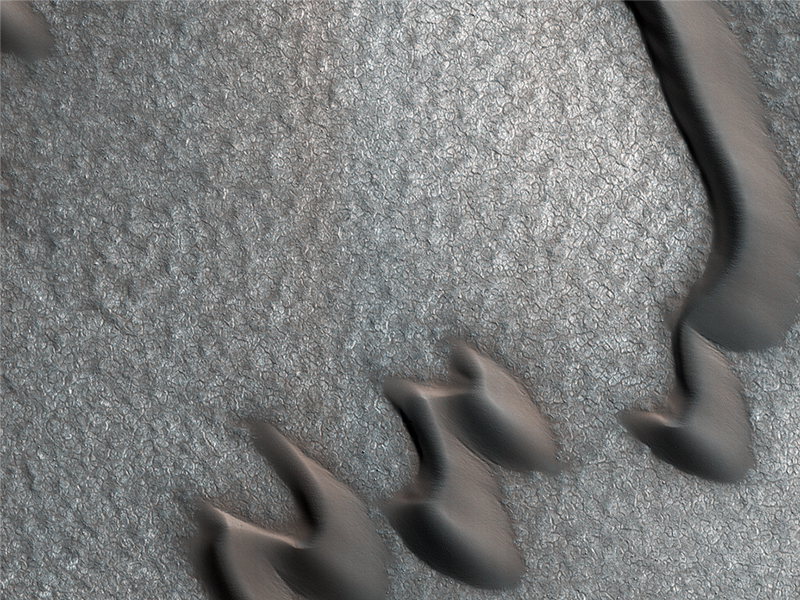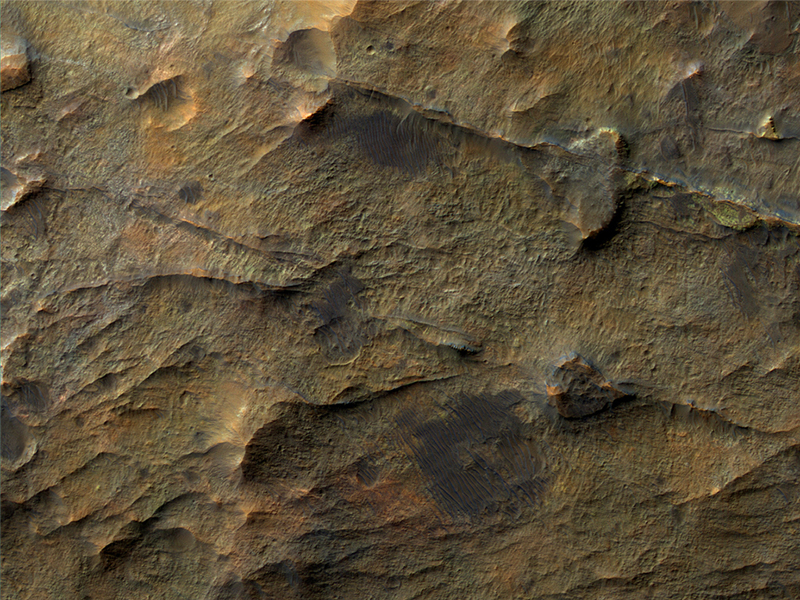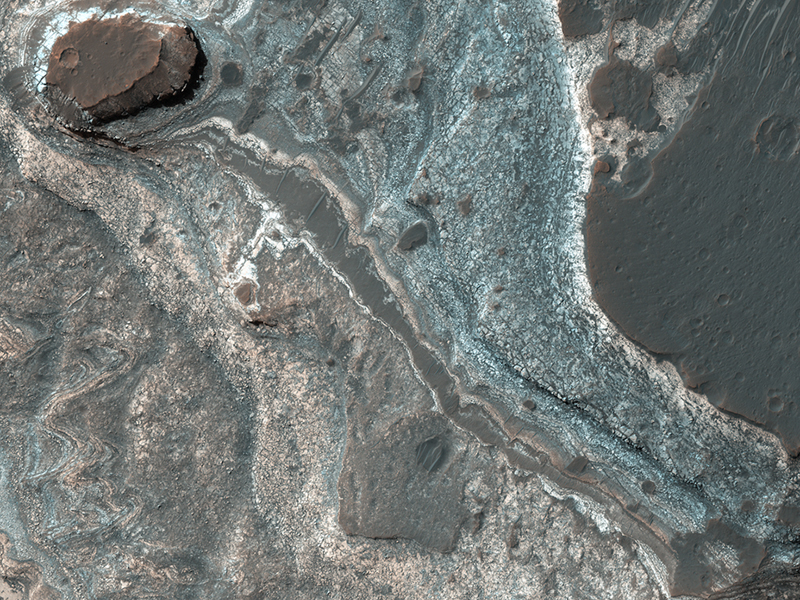Author wrote:Big Fans (ESP_054117_1585) (HiClip)
Alluvial fans are fan-shaped deposits emerging from regions of steep topography. Alluvial fans on Mars are thought to be ancient and record past episodes of flowing water. This image shows part of one of those fans, which has been eroded.
The old stream channels now stand above the rest of the fan as ridges, mostly in the southern (bottom) part of the image. This can occur because the channel materials are more resistant to erosion; perhaps they had larger grains (gravel) or because minerals deposited from the water cemented together.
Shane Byrne wrote:The Case of the Martian Boulder Piles (ESP_053924_2550) (HiClip)
This image was originally meant to track the movement of sand dunes near the North Pole of Mars, but what's on the ground in between the dunes is just as interesting!
The ground has parallel dark and light stripes from upper left to lower right in this area. In the dark stripes, we see piles of boulders at regular intervals.
What organized these boulders into neatly-spaced piles? In the Arctic back on Earth, rocks can be organized by a process called “frost heave.” With frost heave, repeatedly freezing and thawing of the ground can bring rocks to the surface and organize them into piles, stripes, or even circles. On Earth, one of these temperature cycles takes a year, but on Mars it might be connected to changes in the planet’s orbit around the Sun that take much longer.
This is a stereo pair with ESP_053937_2550.
Alfred McEwen wrote:Ridges near Nirgal Valles (ESP_053752_1540) (HiClip)
In this observation, we see a set of straight ridges in ancient bedrock near Nirgal Valles. The patterns indicate fractures from tectonic stresses, but how have they been hardened to now stand in positive relief after billions of years of erosion?
It’s possible that groundwater flowed through the fractures, depositing various durable minerals, some of which we see in diverse colors.
Cathy Weitz wrote:Layers along a Pit in Coprates Catena (PSP_007917_1650) (HiClip)
This image shows the western wall of a small pit that is located along the floor of a larger trough in Coprates Catena. Dark layers are exposed along the bottom of the pit wall while light-toned layers are near the top of the pit and the adjacent trough floor.
Based upon where the layers are exposed, we can tell that the dark layers formed first followed by the light layers. The light layers could have been deposited when water filled part of the trough while the dark layers could be older lava flows.
This is a stereo pair with PSP_009631_1650.
Credit: NASA/JPL-Caltech/University of Arizona
<< Previous HiRISE Update



